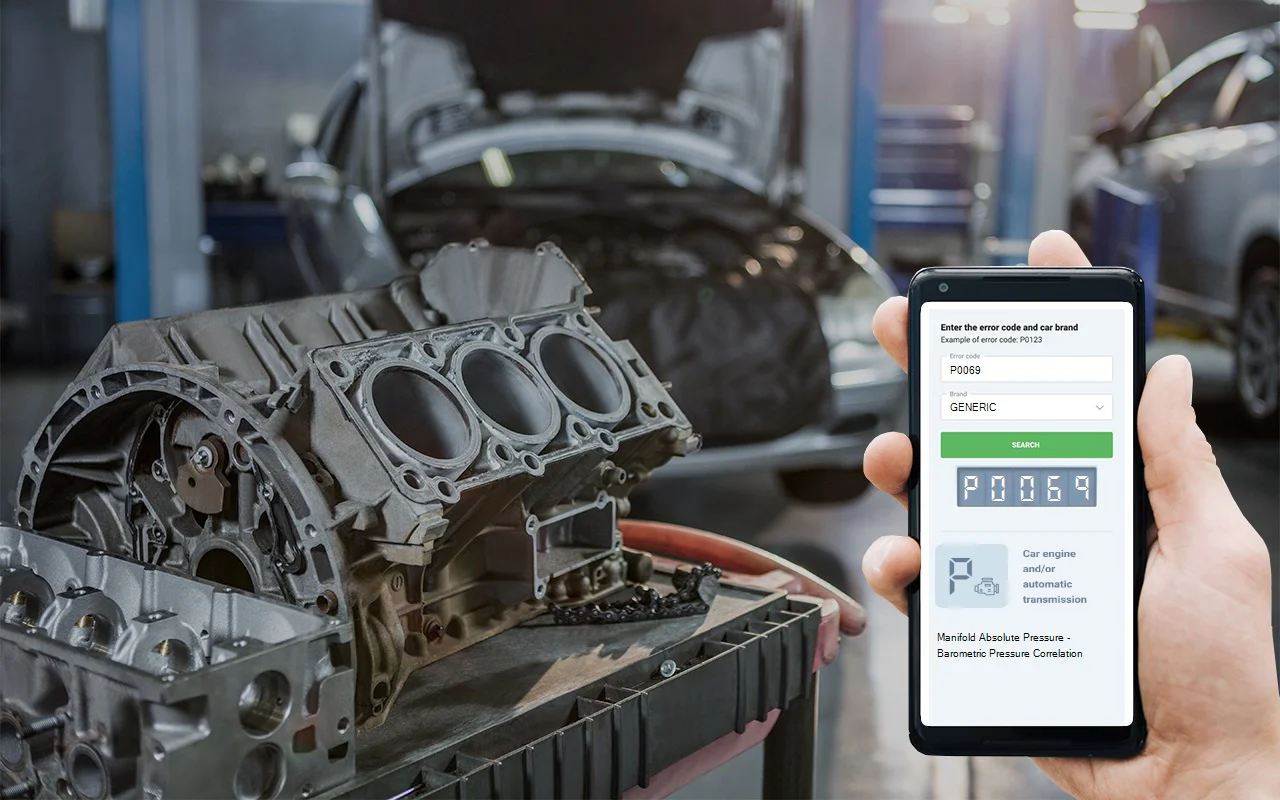Let me break down what Diagnostic Trouble Code P0069 means in plain English. This code pops up when your car’s computer (the PCM) notices that the readings from two important sensors-the Manifold Absolute Pressure (MAP) sensor and the Barometric Pressure (BARO) sensor-don’t match up the way they should. These sensors help the engine figure out how much air is coming in and what the outside air pressure is, which is crucial for delivering the right amount of fuel and keeping everything running smoothly. If the difference between their readings is too big, the PCM throws this code to let you know something’s off. In most modern vehicles, these sensors work together to monitor engine load and altitude, and sometimes they’re even built into the same housing. Their job is to help the engine run efficiently, so when they disagree, it can cause all sorts of performance issues.
DTC P0069
Causes of obd2 code P0069
From what I see most often in the shop, there are a few usual suspects behind a p0069 dtc. Here’s the rundown of the most common causes, based on solid OEM data and real-world experience:
- A faulty MAP sensor or BARO sensor-these can wear out or fail over time.
- Problems with the wiring or connectors for either sensor-loose, corroded, or damaged wires can mess up the signals.
- Damaged or leaking vacuum lines between the intake manifold and the MAP sensor-these lines are easy to overlook but can cause big headaches.
- In rare cases, a failed PCM (the car’s computer) might be to blame, but that’s not usually the first thing I check.
Honestly, most of the time, it’s a sensor or a vacuum line issue. I recommend starting with those before jumping to anything more complicated.
Symptoms of P0069 trouble code
If your car’s throwing a dtc p0069 ford, you’ll probably notice a few things right away. The check engine light will come on, which is your first clue. You might also see your fuel consumption go up-so you’re stopping at the gas station more often than usual. Engine performance can take a hit, too: you could feel a lack of power when accelerating, or even experience stalling, especially at idle or when coming to a stop. From experience, these symptoms can sneak up on you, but they’re a sign that something’s not right under the hood.

Diagnosis steps for P0069
Here’s how I usually tackle a p0069 code, step by step. First, I always start with the basics-don’t skip the simple stuff!
- Check for any obvious damage to the vacuum lines connected to the MAP sensor. Look for cracks, splits, or loose connections. It’s best to have someone assist you by gently moving the lines while you watch for leaks.
- Inspect the wiring and connectors for both the MAP and BARO sensors. Make sure there’s no corrosion, broken wires, or loose plugs. A quick wiggle test can reveal intermittent issues.
- If everything looks good physically, I’ll use a scan tool to compare the readings from the MAP and BARO sensors. With the engine off and the key on, both sensors should show similar values. If one’s way off, that’s a clue.
- Next, I’ll check the sensors themselves. If your vehicle has a separate BARO sensor, make sure it’s vented properly to the atmosphere and not clogged. For MAP sensors, I’ll test them with a vacuum pump to see if they respond correctly.
- If all else fails, and the sensors and wiring check out, I’ll look at the PCM. But honestly, it’s rare for the computer to be the problem.

Common Mistakes when troubleshooting P0069 engine code
One thing I see a lot is folks jumping straight to replacing sensors without checking the vacuum lines or wiring first. That’s a surefire way to waste money and time. Another common mistake is not comparing the MAP and BARO sensor readings with the engine off-this step is crucial for pinpointing which sensor is off. Skipping the basics or ignoring the possibility of a wiring issue can lead to misdiagnosis. It’s best to rule out the simple stuff before buying new parts.

Seriousness of dtc P0069 issues
This isn’t something you want to ignore. When the MAP and BARO sensors aren’t working together, your engine can run too rich or too lean, which means poor fuel economy and rough running. In some cases, the engine might stall unexpectedly-a serious hazard, especially in traffic. If left unchecked, you risk damaging the catalytic converter, fouling spark plugs, or even causing long-term engine wear. Things can go south quickly if overlooked, so don’t put this off for later.
Repair options for P0069 code
Once you’ve nailed down the cause, here’s what usually fixes a p0069 on vehicles like Ford, Renault:
- Replace any damaged vacuum lines between the intake manifold and the MAP sensor.
- Repair or replace faulty wiring or connectors for the MAP or BARO sensors.
- Swap out a bad MAP or BARO sensor with a new, OEM-approved part.
- In rare cases, if the PCM is at fault, it may need to be reprogrammed or replaced-but that’s almost never the first step.
Conclusion
To sum it up, P0069 means your car’s computer is seeing a mismatch between the MAP and BARO sensors, which can lead to poor performance and higher fuel costs. Diagnosing this code is all about starting with simple checks-vacuum lines, wiring, and sensor readings-before moving on to more complex fixes. It’s a moderate-to-high risk issue, especially if you notice stalling or power loss. The most reliable way to resolve it is to methodically inspect and repair the basics first, and only replace sensors or the PCM if you’re sure they’re the culprit. Acting quickly will save you bigger headaches down the road.




